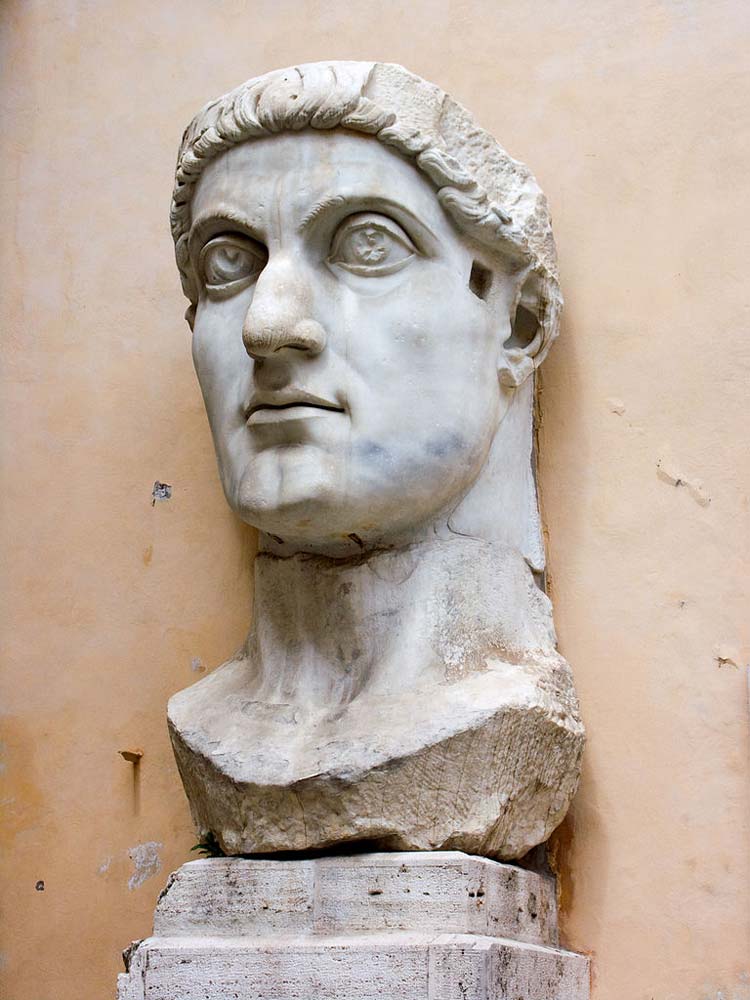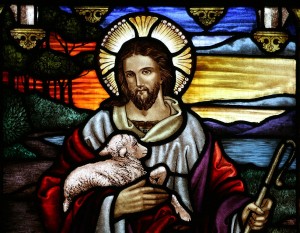| Constantine the Great | |
|---|---|
 |
|
| Photo by: Gernot Keller Creative Commons | |
| First Christian Roman Emperor | |
| In Power | 306-337 AD |
| Born | Flavius Valerius Aurelius Constantinus Augustus February 27, c.272 Naissus, Moesia Superior, Present day Serbia |
| Died | May 22, 337 (at age 65) Nicomedia |
| Nationality | Roman |
| Religion | Roman Catholic |
Flavius Constantine (aka Constantine the Great), is possibly known as the greatest proponent of the Catholic Church. He played a great role in the development and formation of the Catholic Church, and the role it played in everyday life and society, of the people of his time. He gave Catholicism and the church, a legitimate standing, politically and socially, in the Roman Empire.
The work he did for the church allowed the religion to establish itself and to establish its prominence in Rome. Upon the establishment of the church as a power and leading religion, more religious patrons joined the church, and ultimately, this religion became the leading faith in the Western World and in many other corners of the world during Constantine’s reign and even to this day.
His Vision
There are stories and accounts that state that on the nights prior battling with enemies outside of Rome, Constantine was visited and given an omen. The accounts differ as to whether he had a dream, or whether he saw a vision in the sky that was the source of the omen. However, both of the accounts agree that the omen which was received by Constantine stated that he would conquer under Catholicism and the sign of Jesus Christ. On the eve of the attack, and upon the defeat of Maxentius and his army, Constantine believed that the omen had come true, and this is what led him to trust, and to establish Catholicism in his empire.
Following the Victory
Upon defeating Maxentius, the first thing that Constantine did was to issue the Edict of Toleration, and this was done in 313. Because it was created in Milan, the issue was also known as the Edict of Milan. The edict stated that religious toleration was to be the new law of the land, and that Christianity was no longer to be a persecuted form of religion. He outlawed the persecution of an individual due to religious beliefs.
Not only was Christianity tolerated, it was in fact established as one of the leading religious institutions in the Roman Empire and throughout many neighboring states at the time. Licinus jointly issued this Edict with Constantine. Although it had been established, Christians who lived in the East, under the rule of Maximin Daia, still suffered religious persecution if they followed Christianity and its teachings. This meant that a majority of people living in the Roman Empire at the time only had the choice of practicing Paganism.
The Arch
 The Arch of Constantine was dedicated to the great leader in 315, both by the senate and the people who lived in Rome. This was established in connection with the triumphal route, after Constantine had defeated Maxentius, which took place at the Milvian Bridge in 312. This Arch was not only a celebration of his victory and rule, it was also a commemorative piece for the 10th anniversary that Constantine had been in rule as the Emperor in Rome.
The Arch of Constantine was dedicated to the great leader in 315, both by the senate and the people who lived in Rome. This was established in connection with the triumphal route, after Constantine had defeated Maxentius, which took place at the Milvian Bridge in 312. This Arch was not only a celebration of his victory and rule, it was also a commemorative piece for the 10th anniversary that Constantine had been in rule as the Emperor in Rome.
Over time, The Arch has been reworked, and today, it shows a great amount of detail and architecture of the Roman Empire as well as other statutes and structures that were developed during that time period that he was in rule.
Christianity, and the Political Uses Employed by Constantine
The creation and maintenance of unity in Rome, was always the main goal that Constantine had during his rule of the Empire and its people. Regardless of what form that unity took, from political forums, to religious fronts, economic unity, and any other forms of rule, he ruled in a manner to try and bring the Empire together, and try to unite the people, regardless of where they lived in Rome.
In his mind, one of the fiercest and greatest threats to the Roman Empire, was disunity, regardless of which front this disunity came from. The need for religious unity was one that Constantine believed was essential to the power, and to keeping the state of peace in Rome, and he believed that Christianity was the religion that would unify the nation.
Although during his time Christianity and Christians were in the minority, it was a very well organized minority, and one that was solidified, and unified, on every front, not only on religious choices and decisions. Additionally, during this period, there had not been any leader that had tried to claim their political allegiance from those living in Rome. This fact had given Constantine the belief that he had no competitors, and that if he was able to unify people under one religion, he could win over their loyalty in other forms of governance, rule, and the method in which he would rule the Roman Empire, for the rest of his time in power.
Christian Orthodox & Constantine’s Beliefs
His belief in orthodoxy was shown by the fact that he tried to unite all Christians, regardless of which form of Christianity or Catholicism they followed. He believed that a unified front would not be weakened by political strife or other forms of internal strife. He declared himself a bishop that had been ordained by God to rule over the people and guide their religious beliefs.
In his first attempt at uniting the Empire under one religion, he planned to remove Paganism by eliminating the temples and books. He followed by eliminating the Christian groups that were unorthodox in order to ensure all the people, and everyone under his power in Rome, was united under the same front.
His religious belief system led to a unified Rome. Not only is he one of the greatest leaders of his time, he is still considered one of the biggest proponents of the Church and Christianity in Rome and throughout the world.

